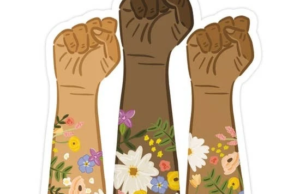Police brutality still presents problem that statistics show may begin at home

On Jan 17, a sixteen-year-old boy was shot and killed by a police officer. The police stated that it was an accident.
A video of the boy’s grandmother states that the boy defended his mother against a cop. When the officer turned on him, he fell to the ground, hands raised in surrender. Then boy was shot and killed by the cop.
He is person 55 to be shot and killed by the police.
A video from Dec 2017 shows a man pleading for his life as he drunkenly struggles to comply with the harsh orders shouted at him by a police officer. This man’s name is Daniel Shaver, and his brutal murder by a police officer was published to the Internet prior to the trial of his killer. Officer Philip Brailsford was tried for second degree murder, and found not guilty.
While this may seem like a gross abuse of power by those employed to protect us from the criminals of the world, it’s extremely common in the United States. More common, in fact, than cops being shot defending us.
Daniel Shaver’s murder led to outcry from many libertarians and liberals, and was yet another reminder that the police in this country have far too much power. However, it was not the only publicized incident of police brutality in the past year.
On Dec. 21, 2017, just a few days before Christmas, a six-year-old boy named Kameron Prescott was shot to death by a police officer in Texas.
Prescott became one of the youngest people to ever be killed by a cop.
In 2017, 126 police officers were killed doing their job. However, the number of people who were killed by cops in 2017 is much higher, at 987. These numbers, to a certain degree, dispel the argument that police brutality is infrequent. If, during the average week, about 19 people are being murdered by police, there is something wrong with the police.
And, while murder by police is brought up most frequently, it’s not the only concern. Studies have found that 40 percent of police officer families experience domestic violence, as opposed to 10 percent of the general population. Domestic violence among police officer families is two to four times more common than domestic violence among the general population.
This is a huge concern, especially considering how much more difficult it is to escape. If you are a victim of domestic violence by an ordinary member of society, you report it to the police. If you are a victim of domestic violence by a police officer, reporting to the police is not an option.
There was a 1994 study done on 123 police departments on how they handled domestic violence by officers, and it not only found that 45 percent of the departments had no specific policy for dealing with domestic violence by their officers, but that 19 percent would only terminate an officer after a second sustained accusation. If 40 percent of your workforce is abusing their families, you need a policy for dealing with that.
Additionally, according to the Journal of Law Enforcement, police officers consume alcohol at about double the rate of the general population. Still, in 2016, the FBI estimated that there were over 1.5 million drug related arrests, many of which are non-violent.
What all of this shows is that police are more than seven times more likely to kill than to be killed, two to four times more likely to be domestically violent, and twice as likely to consume alcohol. In these areas, officers are more likely to commit crime than they are to stop it from happening.
This is not to say that a police force is entirely unnecessary, merely that to be effective in stopping actual violent crime, it must be changed. People who are disproportionately involved in murder, domestic abuse and alcohol use should not be in charge of enforcing laws. However, no changes will happen if we cannot criticize the police, which is difficult in this country.
In 2017, the majority of the public wanted no change in the size of the police force, whereas officers by large wanted a larger force. The public also saw more benefits of body cameras than the police. Sixty-four percent of Americans have a positive opinion of their local police.
Police are not viewed as problematic by most of the population, and gain more power every day. The presence of police is increasing. In December of 2017, Wilson Reyes, a seven-year-old boy, was handcuffed by the NYPD for several hours over allegedly stealing $5 from a classmate. This would be absurdly funny if it weren’t real.
Overall, police power must be reduced. Regardless of how many good cops there are, police officers are still more likely to shoot and kill than to be shot and killed, more likely to abuse and more likely to use alcohol.
Police violence is a problem, and it can only be solved if people are allowed to protest and criticize the police without the police showing up in the form of heavily armed SWAT teams, as has happened at several protests of police brutality. This problem cannot be solved if it is not talked about, and it cannot be solved if police continue to have the power to kill without consequence.









You must be logged in to post a comment Login